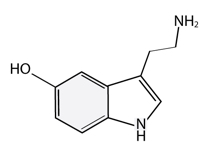Attention issues are among the most common developmental concerns in children today.
Three Types of Attention Issues
There are three basic types, which are differentiated by the prominence of symptoms displayed:
- Predominantly inattentive presentation: problems focusing on a task or following instructions
- Predominantly hyperactive-impulsive presentation: trouble sitting still for long or feeling restless and impulsive
- Combined presentation: equal presentation of both types described above
Attention Issues and Neurotransmitters
The ability to focus on a particular task, organize thoughts effectively, and control impulsive urges are predominantly regulated by the prefrontal cortex (PFC) of the brain.
This area of the brain’s function involves the catecholamines, norepinephrine and dopamine.
Ideally, optimal amounts of these neurotransmitters are released at the appropriate times to ensure adequate attention and appropriate behaviors. However, when we are bored or fatigued, too few of these neurotransmitters are released. When we are stressed, too much of these neurotransmitters can be released.
Both scenarios end in less than adequate functioning of the PFC.
The Role of the Prefrontal Cortex (PFC) in Attention
When alpha(2A)-receptors located in the PFC are stimulated by norepinephrine, chemical signals close off certain ion channels. The closing of these channels strengthens chemical inputs to the cells within the PFC, thus leading to better brain function.
D(1) receptors for dopamine act properly by selectively receiving relevant inputs instead of taking on several peripheral inputs that may lead to an inability to focus on one task.
Research has found that when PFC alpha(2A)-receptors are blocked, symptoms of hyperactivity, impulsivity, and decreased working memory occur, and in contrast, stimulation of these receptors increases PFC function.
Additionally, stimulating the release of endogenous norepinephrine and dopamine, when these neurotransmitters are suboptimal, has been shown to improve PFC function.
However, in the case of too much dopamine and/or norepinephrine release, induced by stress, PFC function is weakened. This is due to the role of the amygdala in influencing brain regulation during stressful situations. High levels of dopamine and norepinephrine being released during a stress response switches the brain from careful thought and considerate regulation by the PFC to rapid, impulsive regulation by the amygdala.
Natural Support for Focus
A few notable natural remedies that have been proven effective in improving focus include:
Botanical Agents
- Pycnogenol: alleviated episodic hyperactivity and inattentiveness, as well as improved hand-eye coordination
- Gingko biloba and Ginseng: relieved hyperactivity, cognitive problems, and defiant behavior
Nutritional Supplements
- Iron: required for norepinephrine and dopamine synthesis; improved ADHD symptoms based on the ADHD Rating Scale
- Zinc sulfate: reduced impulsiveness, hyperactivity, and socialization difficulties
Amino Acids Therapies
- Acetyl-L-carnitine (ALC): indirectly stimulates release of dopamine; alleviated hyperactivity and poor social behavior
- Theanine: increases selective attention; regulates dopamine
- GABA: reduces excitability of neurons, and thus, hyperactivity
- DMAE: improves memory, learning, and mood
Measuring dopamine and norepinephrine values is an important step in deciding what measures to take, as a deficiency or an excess of these catecholamines can lead to less than optimal PFC function.
References
(1) Centers for Disease Control and Prevention (April 29, 2016). Attention-Deficit/Hyperactivity Disorder (ADHD). Retrieved from http://www.cdc.gov/ncbddd/adhd/facts.html.
(2) Arnsten, AF. (2009). Toward a new understanding of attention-deficit hyperactivity disorder pathophysiology: an important role for prefrontal cortex dysfunction. CNS Drugs, 23 (1): 33-41.
(3) Ahn, J, Ahn, HS, Cheong, JH, and dela Pena, I. (2016). Natural Product-Derived Treatments for Attention Deficit/Hyperactivity Disorder: Safety, Efficacy, and Therapeutic Potential of Combination Therapy. Neural Plasticity, 2016.
(4) Pellow, J, Solomon, EM, and Barnard, CN. (2011). Complementary and alternative medical therapies for children with attention-deficit/hyperactivity disorder (ADHD). Altern Med Rev 16(4): 323-337.
(5) Arnsten, AF. (2009). Stress signaling pathways that impair prefrontal cortex structure and function. Nat Rev Neurosci 10(6): 410-422.
Clinical Contributor
[starbox id=”abennett”]


